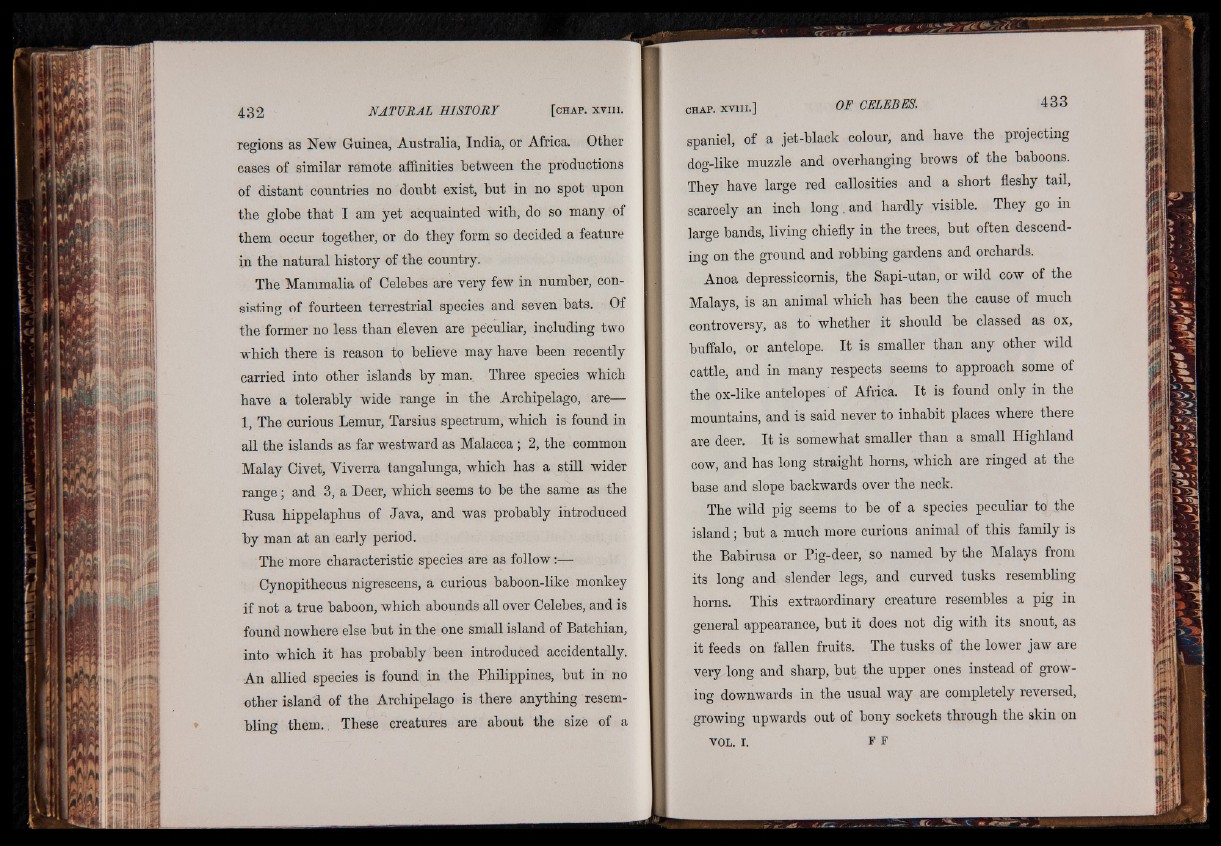
regions as New Guinea, Australia, India, or Africa. Other
cases of similar remote affinities between the productions
of distant countries no doubt exist, but in no spot upon
the globe that I am yet acquainted with, do so many of
them occur together, or do they form so decided a feature
in the natural history of the country.
The Ma.rtrmfl.lia. of Celebes are very few in number, consisting
of fourteen terrestrial species and seven bats. Of
the former no less than eleven are peculiar, including two
which there is reason to believe may have been recently
carried into other islands by man.. Three species which
have a tolerably wide range in the Archipelago, are—
1, The curious Lemur, Tarsius spectrum, which is found in
all the islands as far westward as Malacca; 2, the common
Malay Civet, Viverra tangalunga, which has a still wider
range; and 3, a Deer, which seems to be the same as the
Eusa hippelaphus of Java, and was probably introduced
by man at an early period.
The more characteristic species are as follow:—
Cynopithecus nigrescens, a curious baboon-like monkey
if not a true baboon, which abounds all over Celebes, and is
found nowhere else but in the one small island of Batchian,
into which it has probably been introduced accidentally.
An allied species is found in the Philippines, but in no
other island of the Archipelago is there anything resembling
them., These creatures are about the size of a
spaniel, of a jet-black colour, and have the projecting
dog-like muzzle and overhanging brows of the baboons.
They have large red callosities and a short fleshy tail,
scarcely an inch long. and hardly visible. They go in
large bands, living chiefly in the trees, but often descending
on the ground and robbing gardens and orchards.
Anoa depressicornis, the Sapi-utan, or wild cow of the
Malays, is an animal which has been the cause of much
controversy, as to whether it should be classed as ox,
buffalo, or antelope. It is smaller than any other wild
cattle, and in many respects seems to approach some of
the ox-like antelopes of Africa. It is found only in the
mountains, and is said never to inhabit places where there
are deer. It is somewhat smaller than a small Highland
cow, and has long straight horns, which are ringed at the
base and slope backwards over the neck.
The wild pig seems to be of a species peculiar to the
island; but a much more curious animal of this family is
the Babirusa or Pig-deer, so named by the Malays from
its long and slender legs, and curved tusks resembling
horns. This extraordinary creature resembles a pig in
general appearance, but it does not dig with its snout, as
it feeds on fallen fruits. The tusks of the lower jaw are
very long and sharp, but the upper ones instead of growing
downwards in the usual way are completely reversed,
growing upwards out of bony sockets through the skin on
v ol. i. s’ F